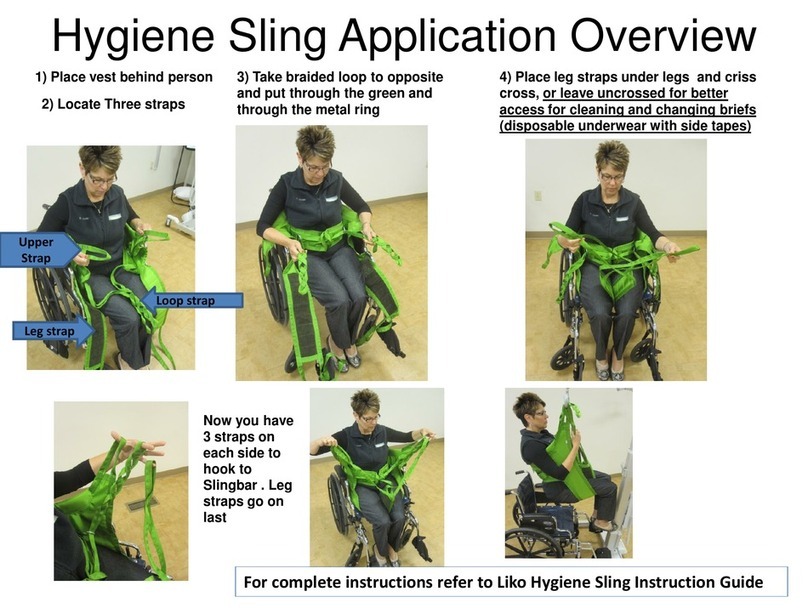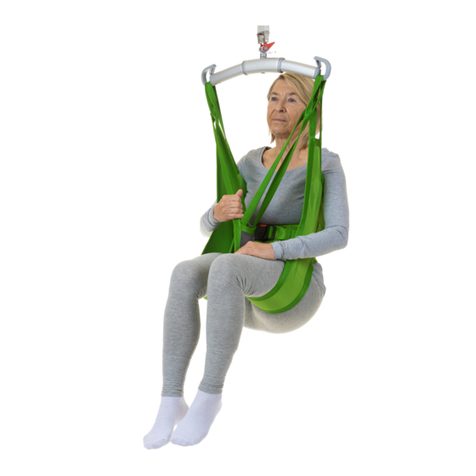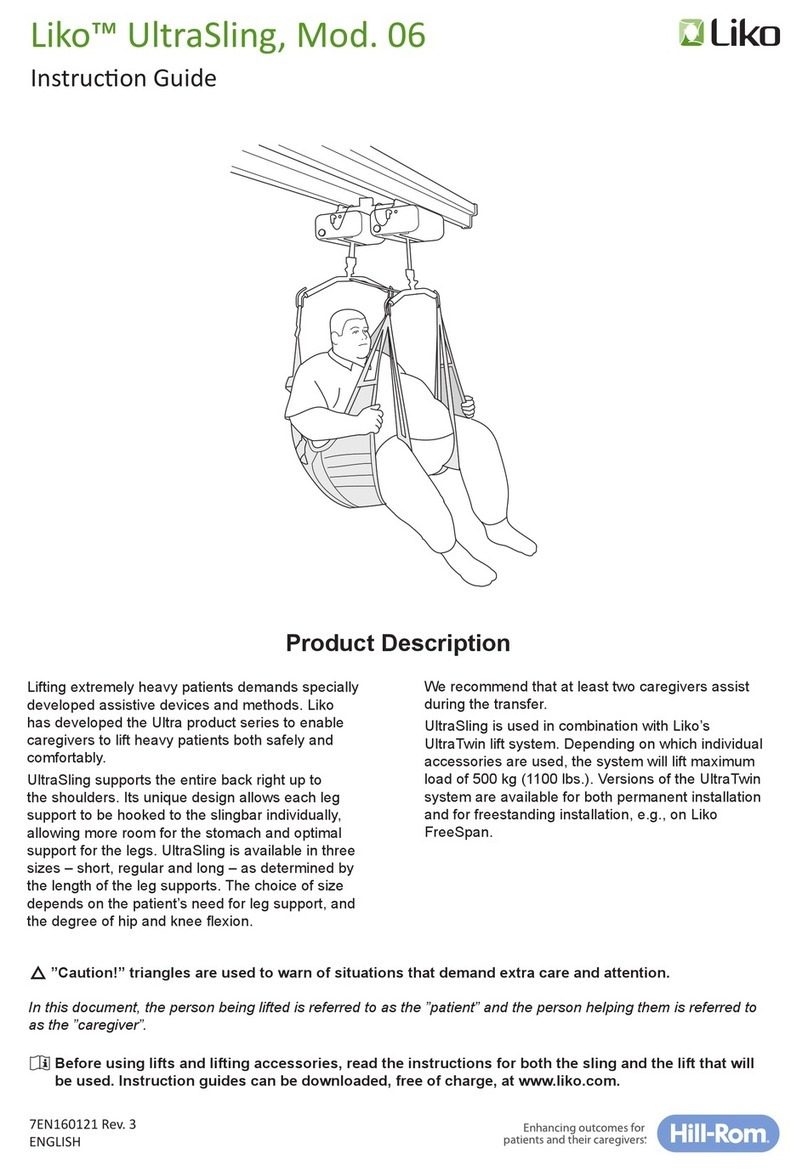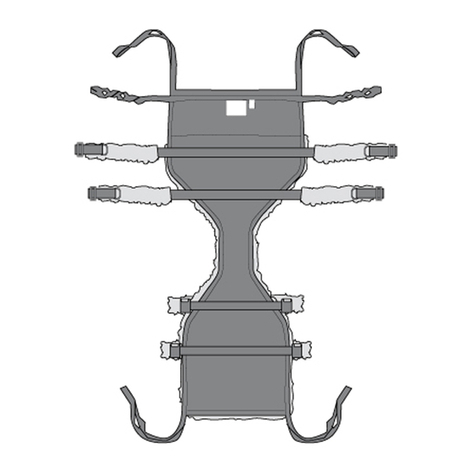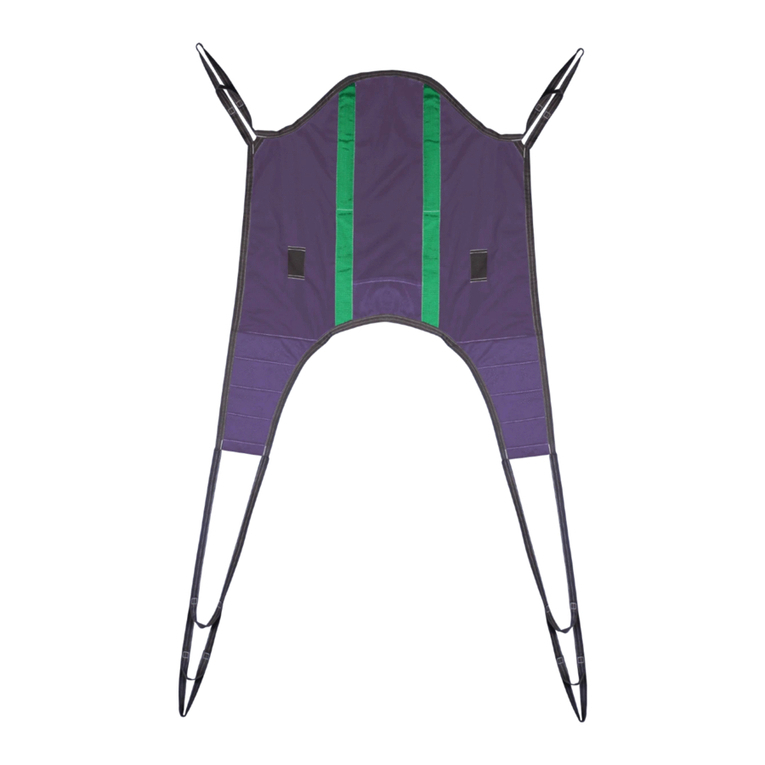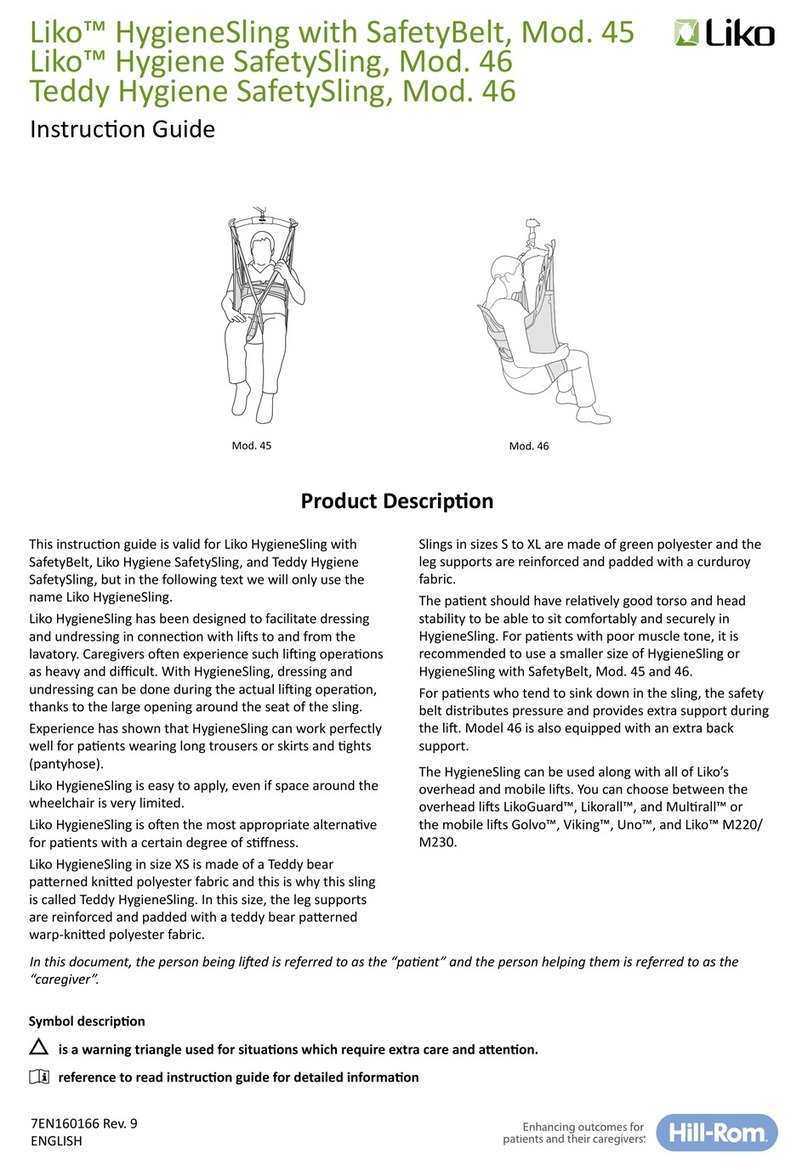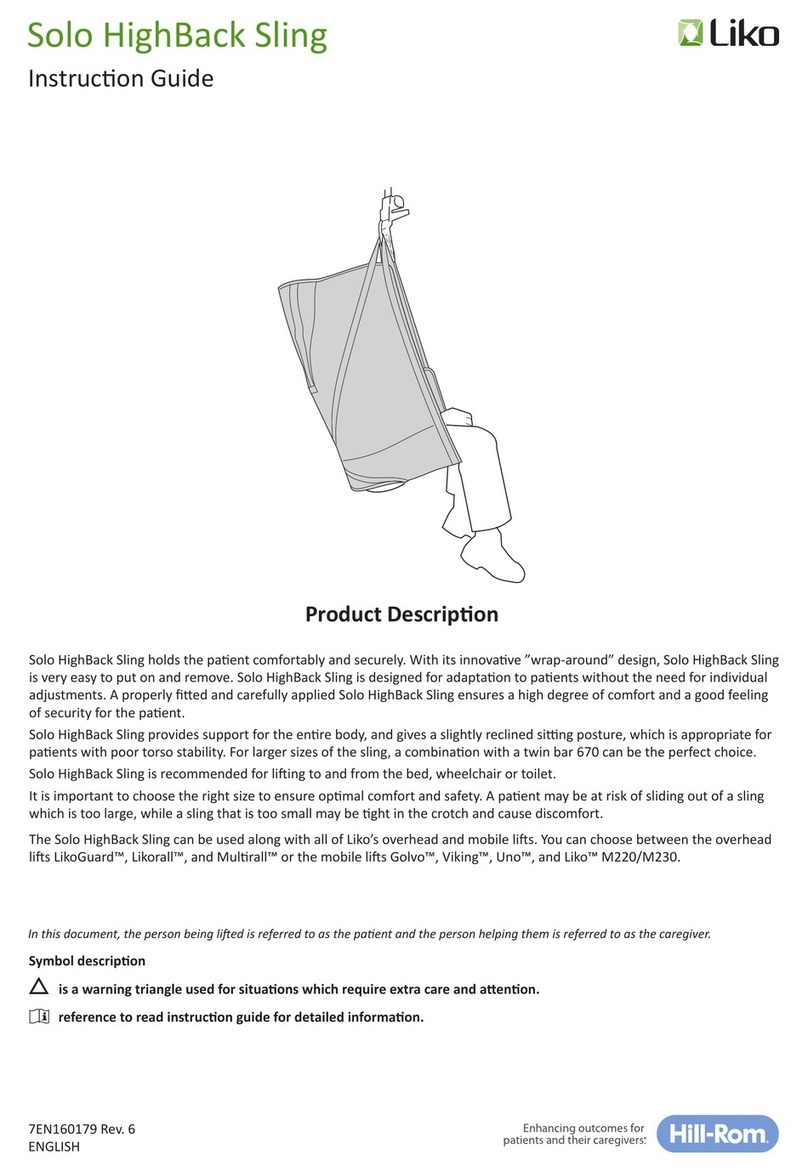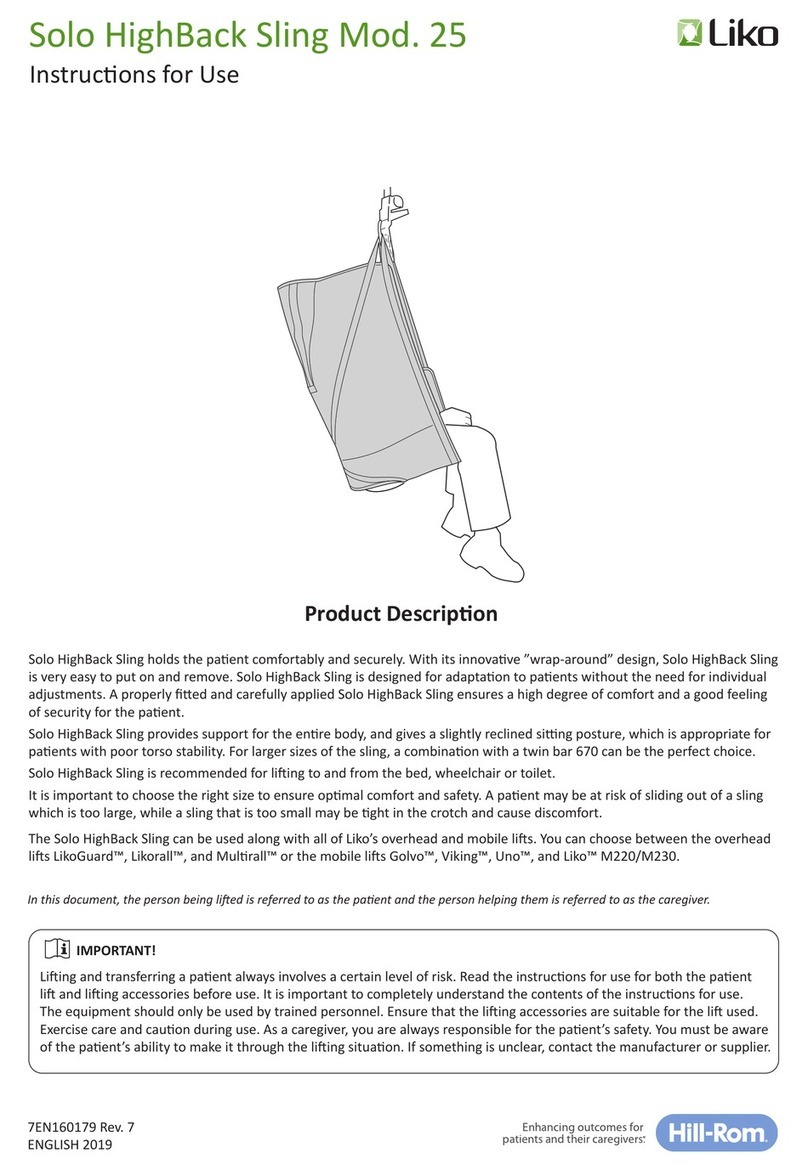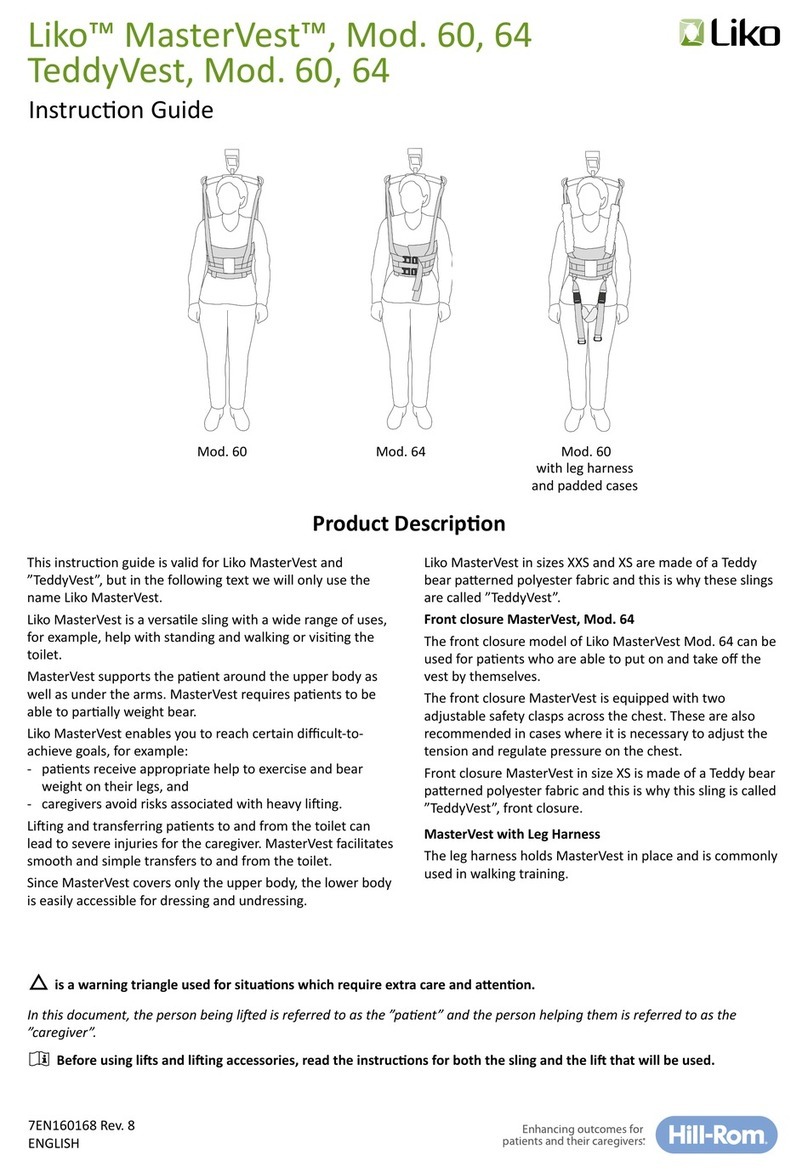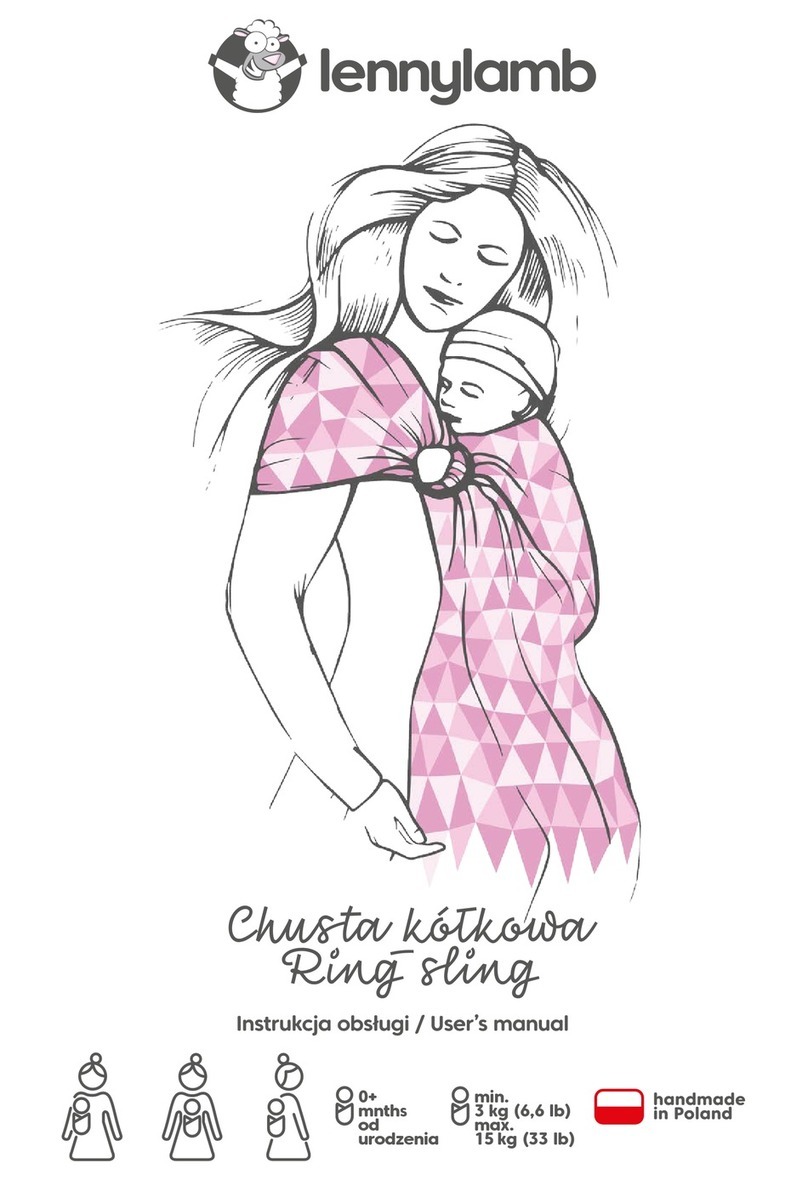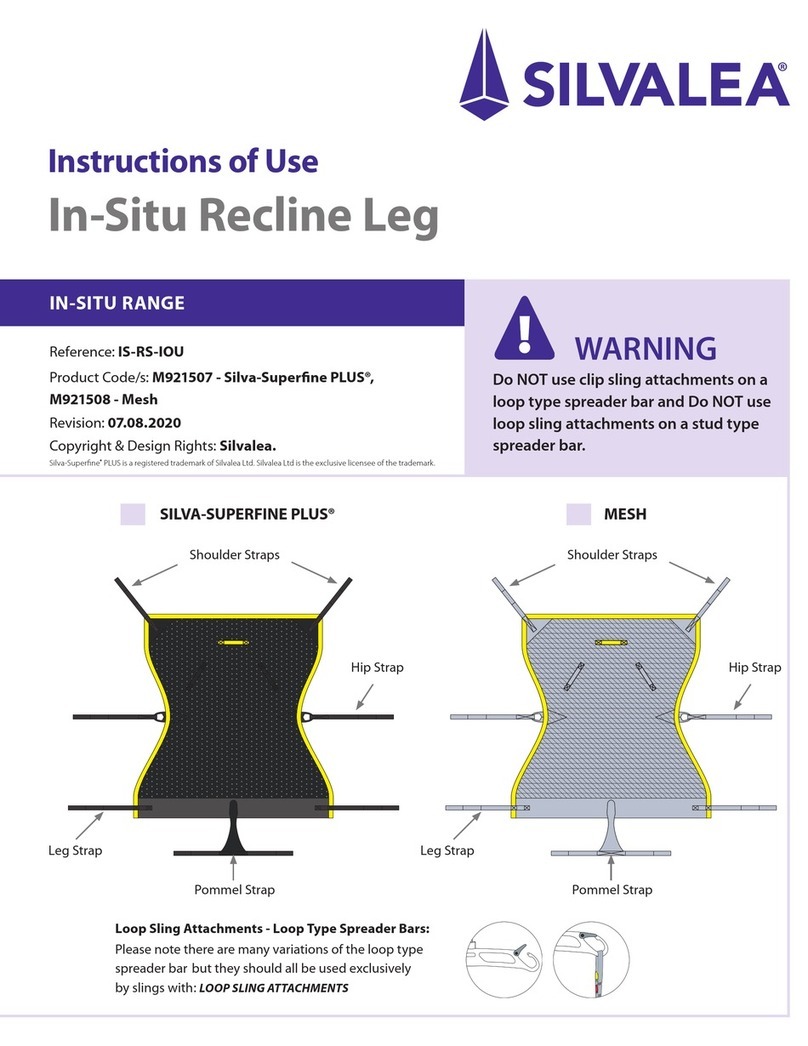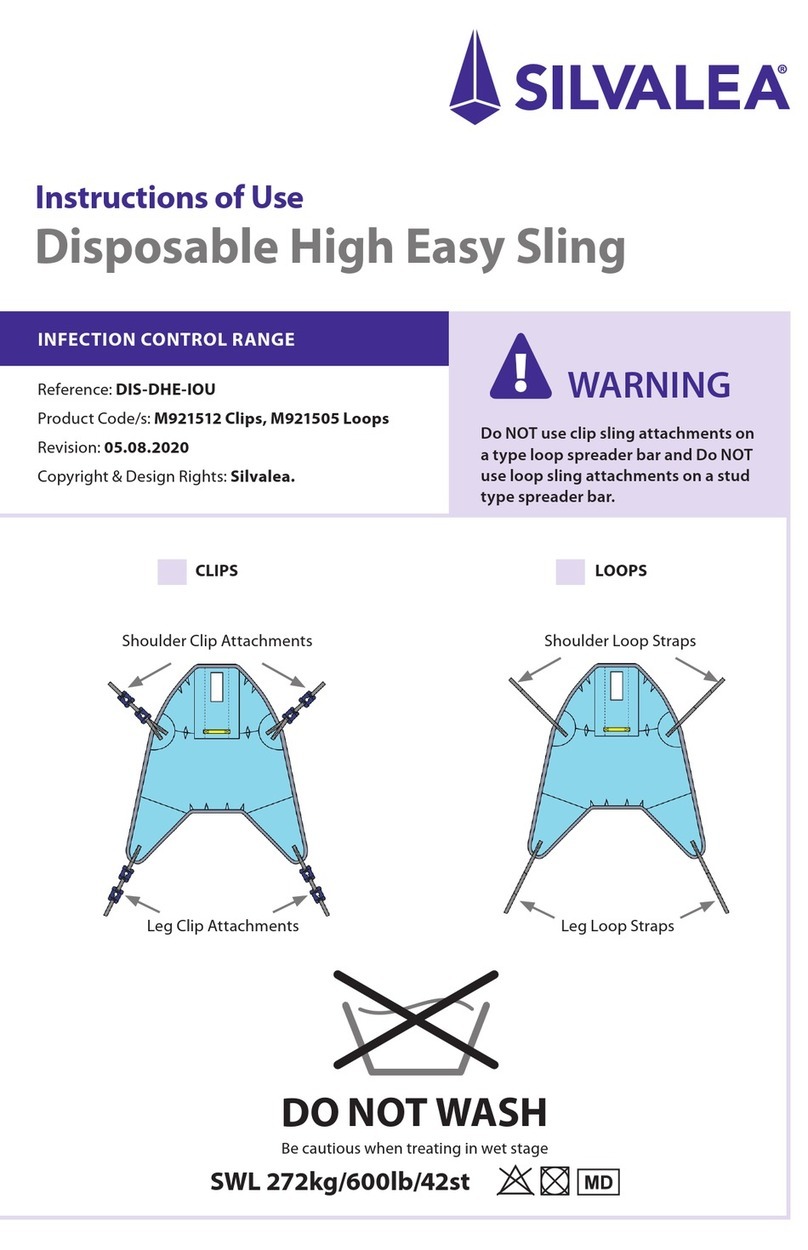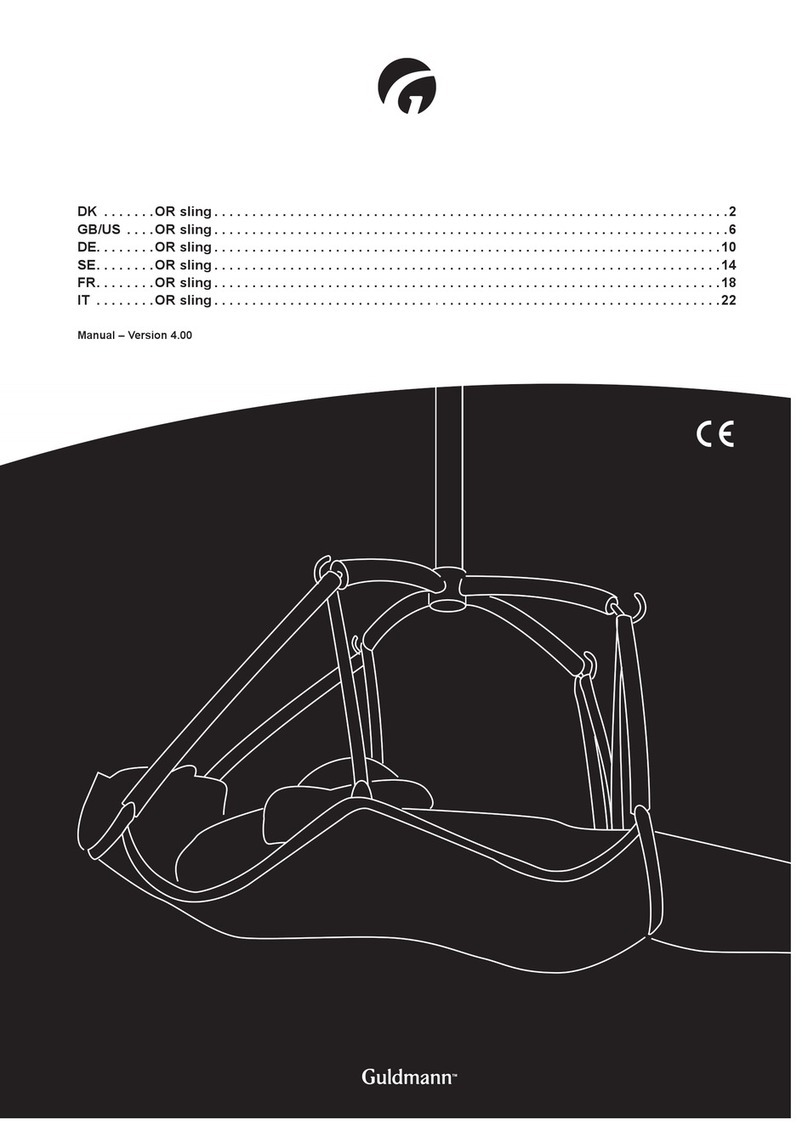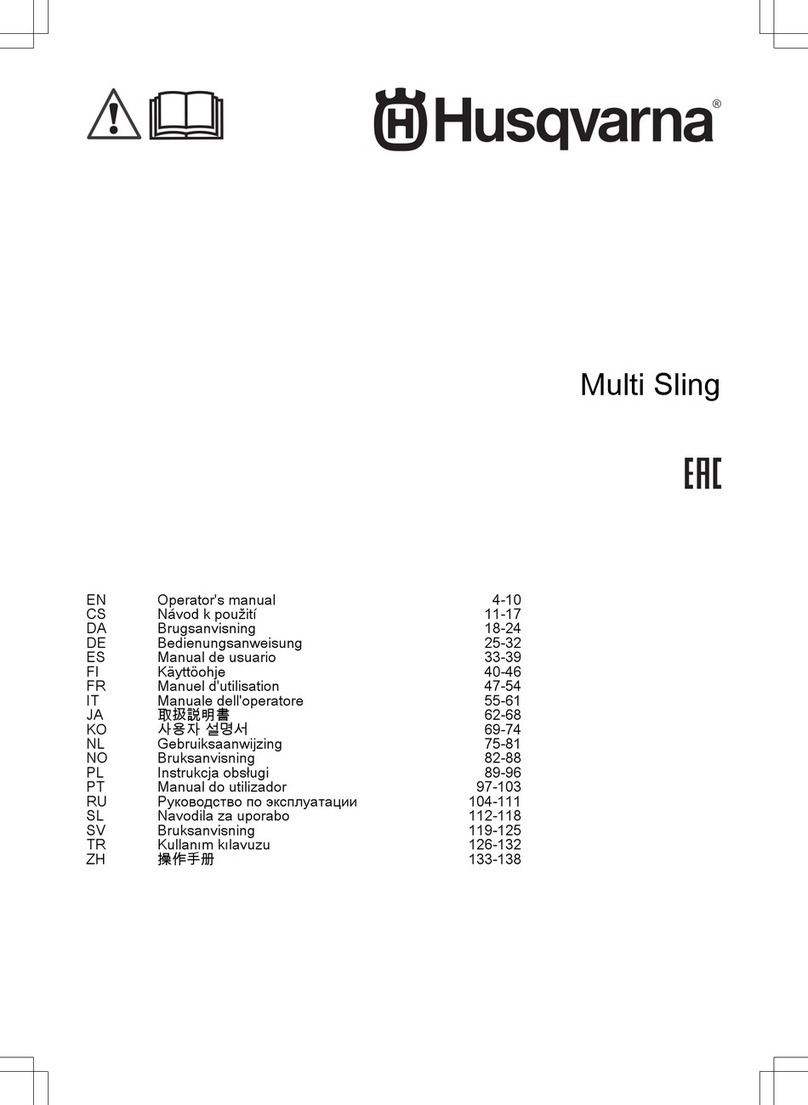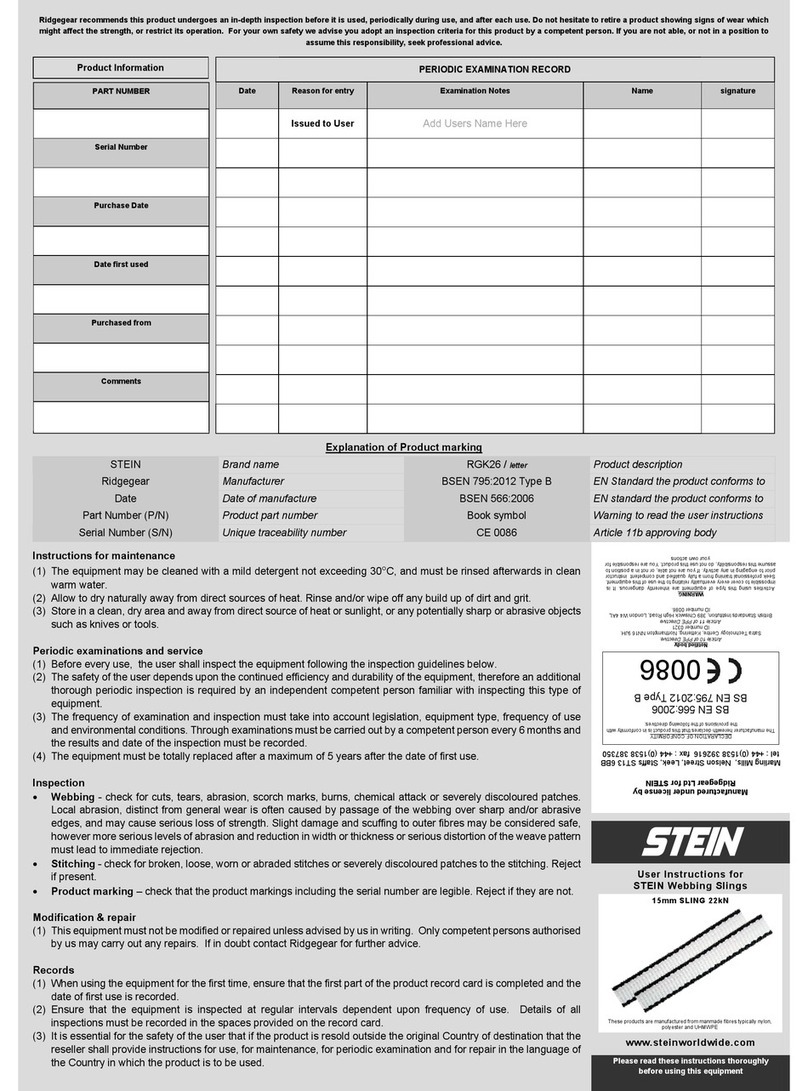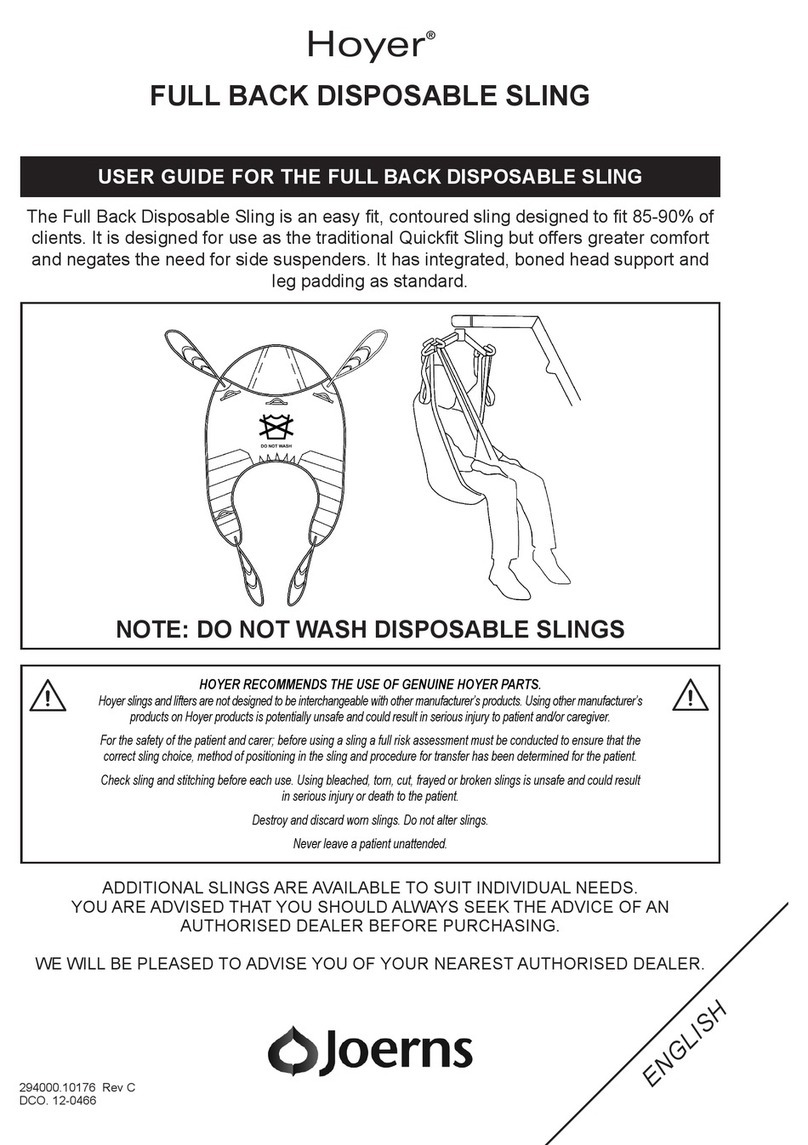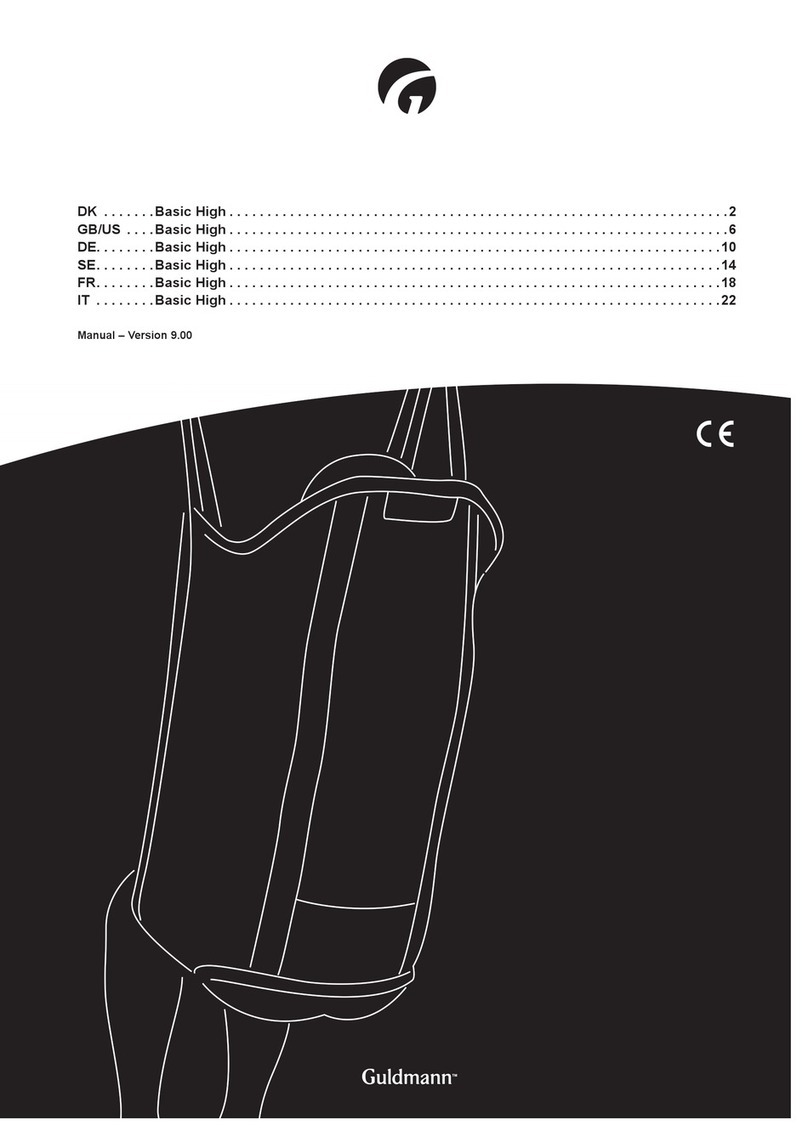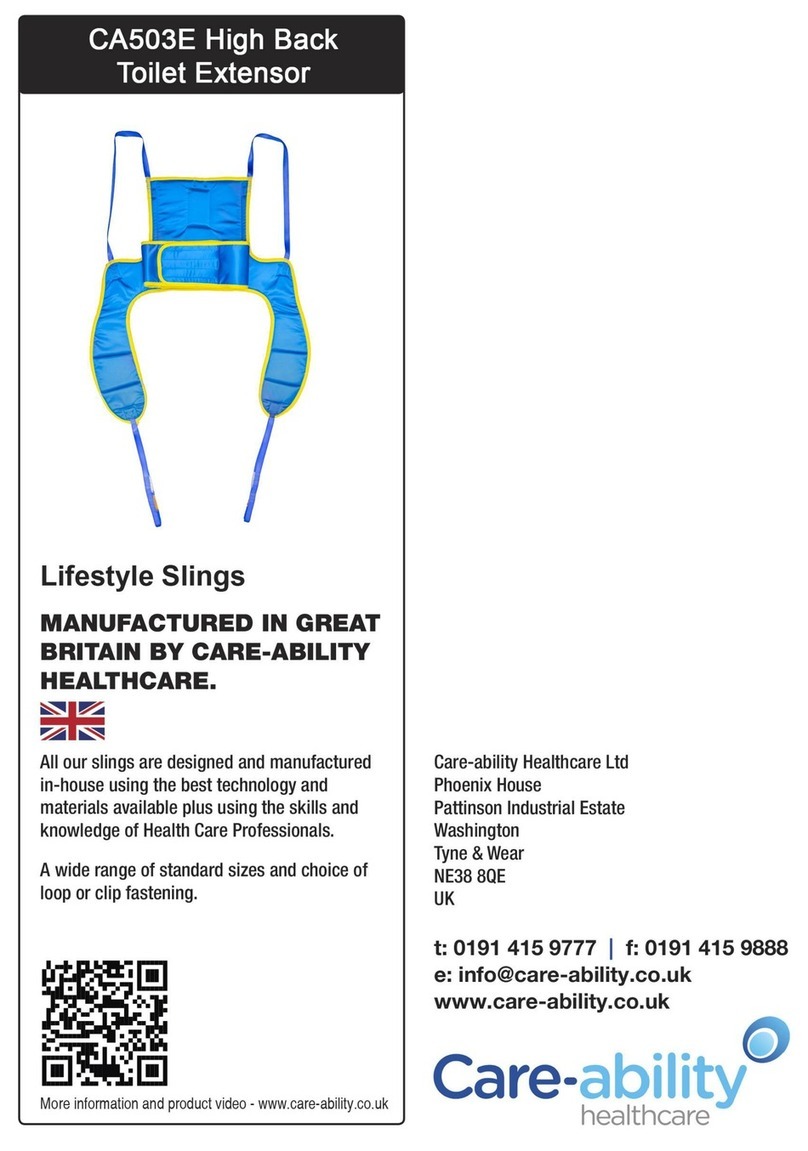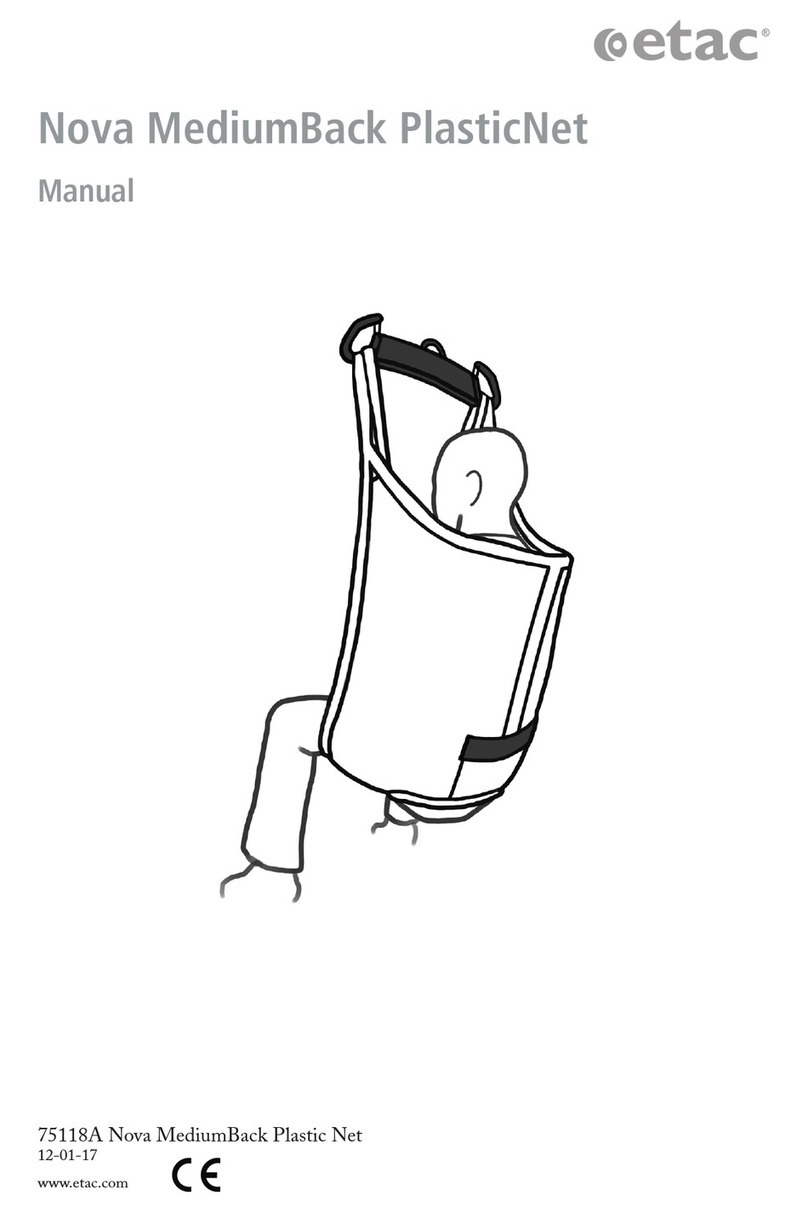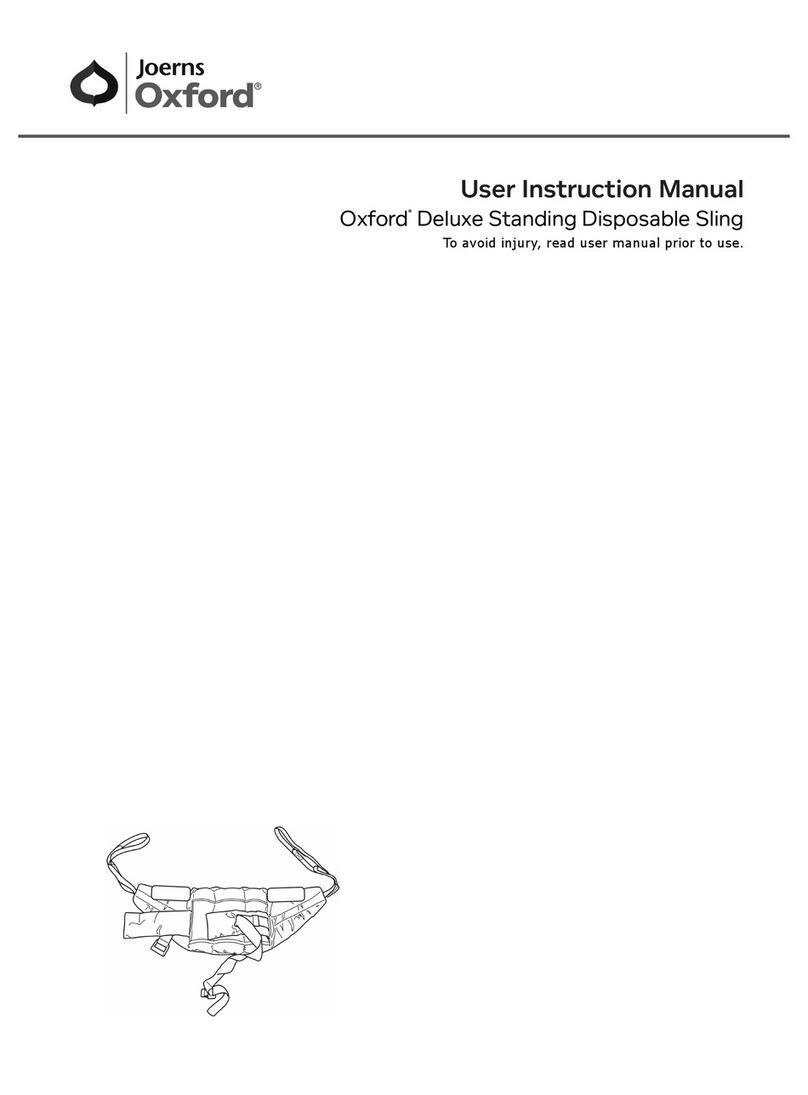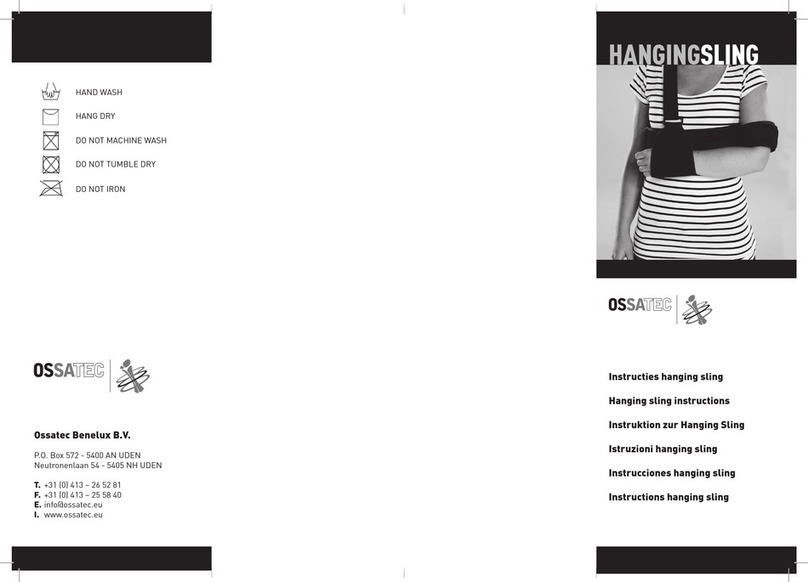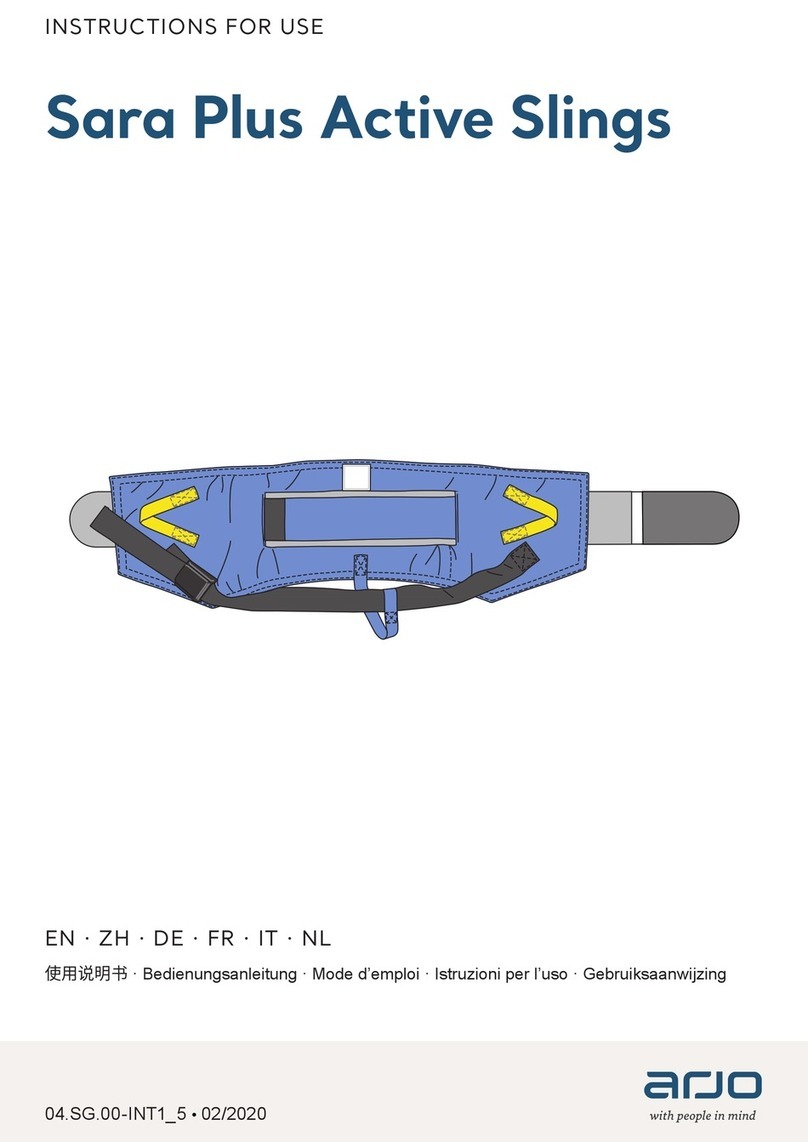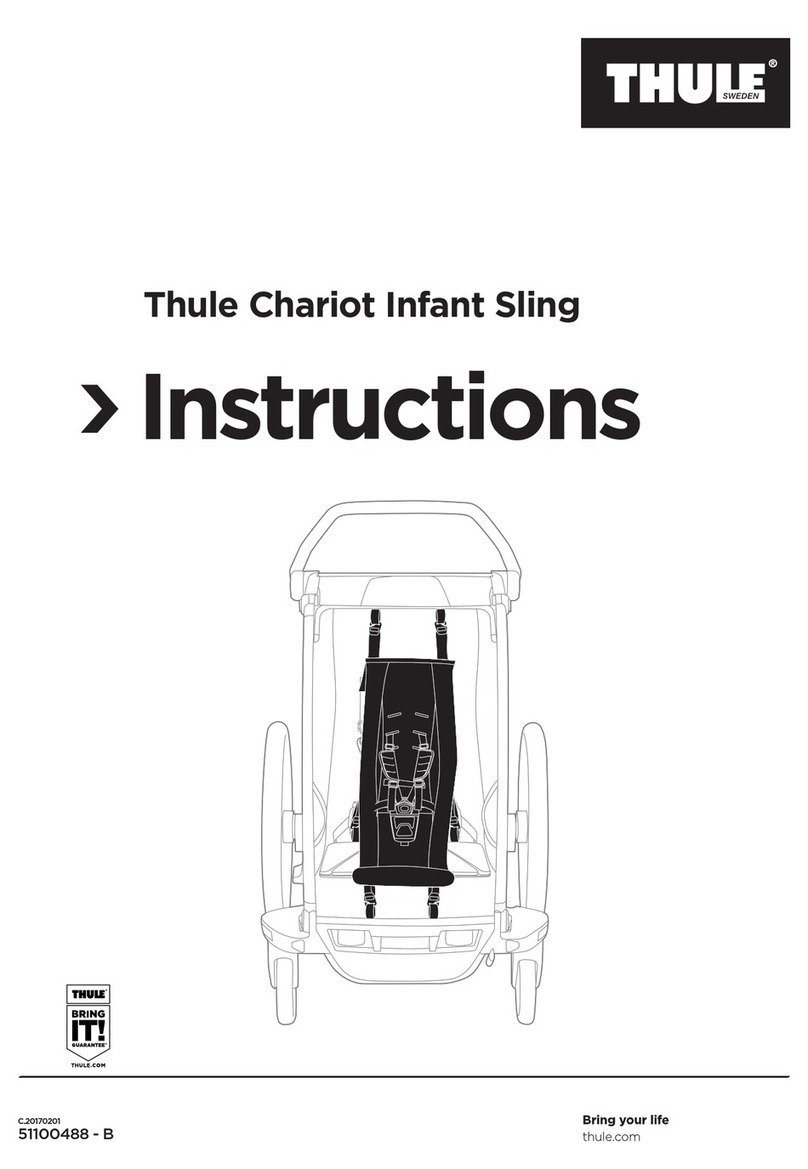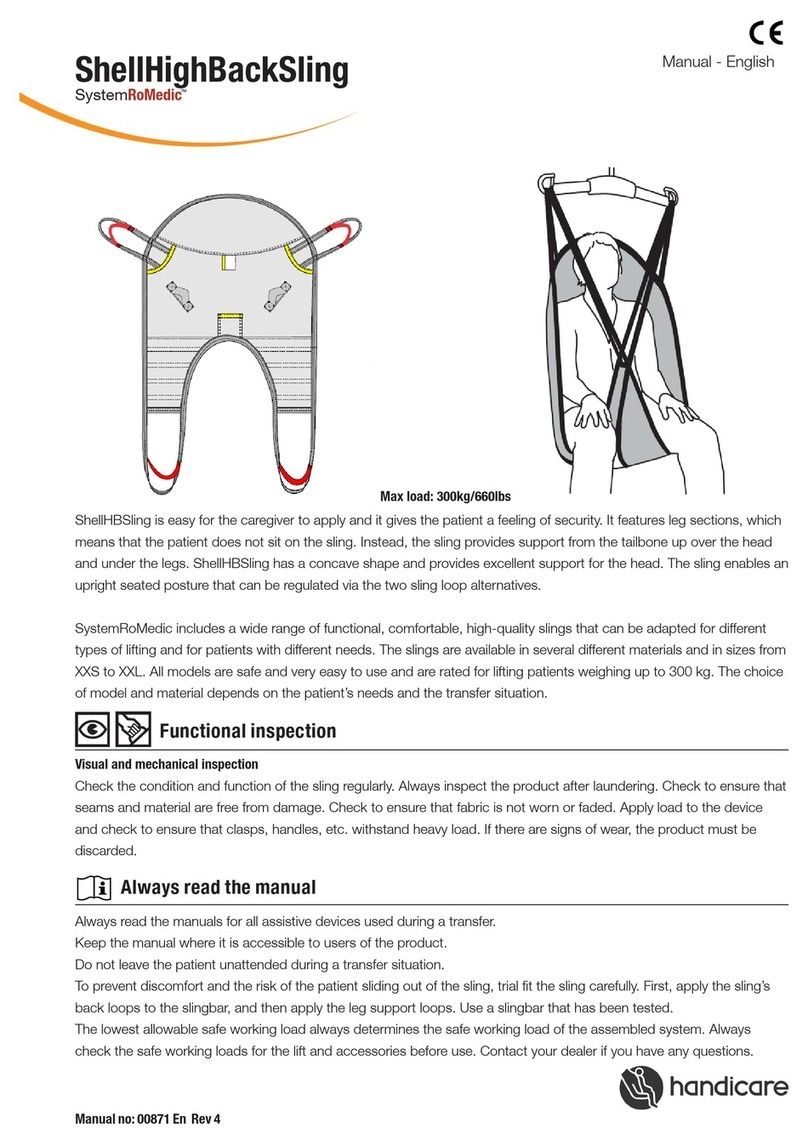
89
Liko™ SilhoueeSling • 7EN160137 Rev. 7 www.hill-rom.com I www.liko.com
Liing to the Bed
Think about your own work posture as well as the comfort of the paent. Use the bed’s raising and lowering funcons.
Removing the Sling when the Paent is Sing in Bed
Posion the paent above the bed.
Raise the head end of the bed. Lower
the paent onto the bed.
Remove the leg supports by pulling out
the leg support loops under the fabric part
of the leg support. Tip: This is facilitated if
the paent’s legs are bent.
Remove the sling by carefully pulling
it up.
We recommend applying the sling when the paent is lying horizontally, as this is the easiest procedure. In some cases, e.g.,
if the paent cannot lie horizontally, the sling can be applied with the paent sing up in bed (see Alternave method of
applying the sling below).
Think about your own work posture as well as the comfort of the paent. Use the bed’s raising and lowering funcons.
Liing from the Bed
Turn the paent towards you to prevent
him or her from falling out of the bed.
Insert the sling’s edge under the paent
with the lower edge level with the
coccyx. The upper edge of the head
support should then not be lower than
the head in order to give enough head
support during the li. Fold the sling
so that its centre corresponds to the
paent’s spine when the paent is turned
back again gently. Carefully pull the sling
out from the other side.
Alternave method of applying the sling: Raise the head end of the bed behind the paent. Lay the sling on the bed with
the product label facing down towards the maress. Slide the sling down behind the paent’s back so that the lower edge
is in level with the coccyx. Tip! The applicaon is facilitated if the paent leans/is leaned forward.
Raise the head end of the bed.
First, connect the torso loops to the
sling bar and then the upper strap
loops. Choose loops according to
the paent’s needs, see Adjustment
of head support, page. 11. Finally,
connect the leg support loops to the
sling bar. See page 5-6 for instrucons
on how to aach the sling loops to
dierent sling bars. Li the paent.
Insert the leg supports under the legs.
This is best done by pressing the leg
support down against the maress
while inserng it under the thigh.
Make sure the fabric lies at and that
it reaches properly around the leg.
The leg supports can be connected in
dierent ways, see page 10.
If the bed is not equipped with a head end that can be raised/lowered, special aenon must be paid during the rst
part of the li, in order for the paent’s neck not to be strained. The caregiver should then support the neck manually.
If the bed is not equipped with a head end that can be raised/lowered, special aenon must be paid during the
last part of the lowering, in order for the paent’s neck not to be strained. The caregiver should then support the neck
manually.
